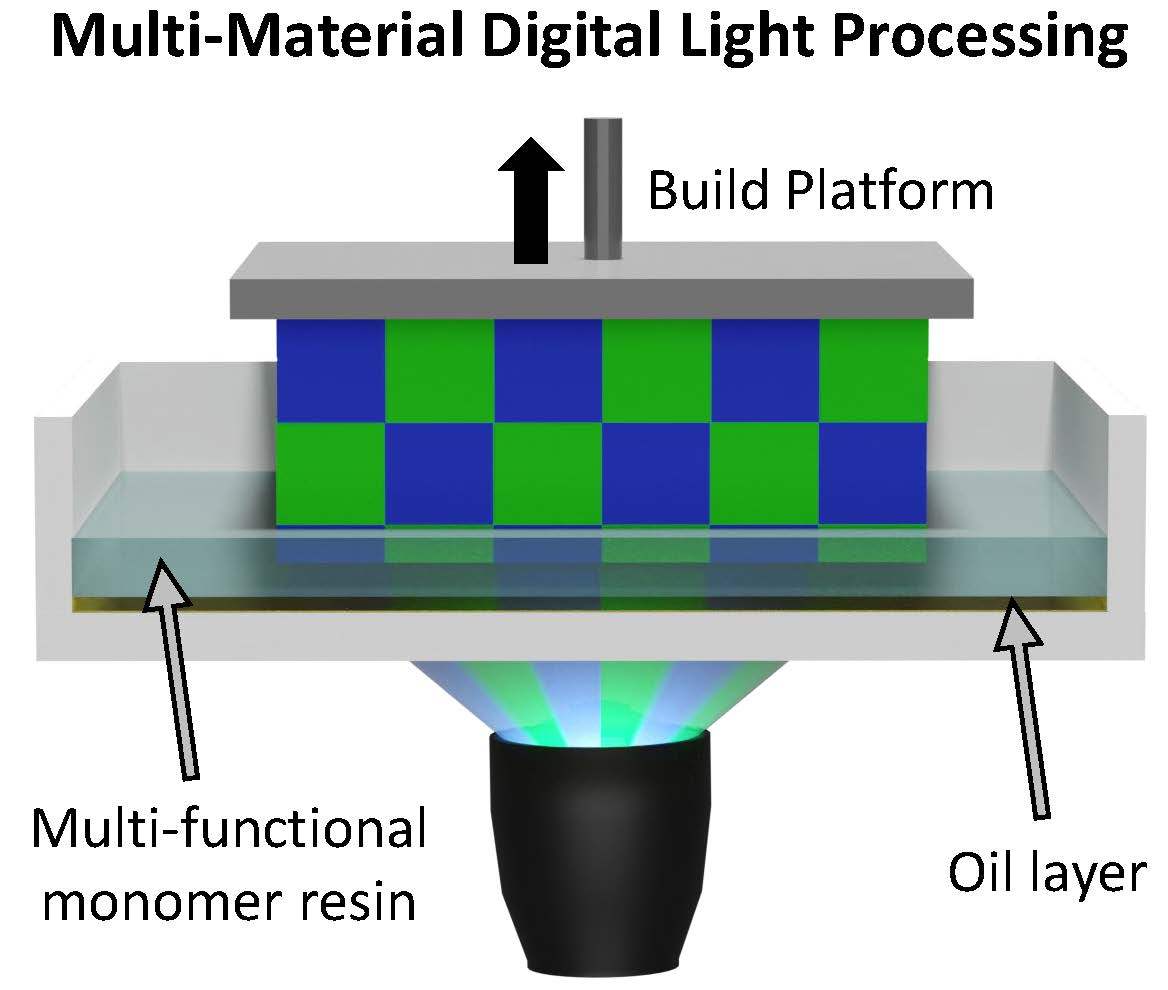The U.S. National Science Foundation (NSF) is looking for materials that “revolutionize and engineer our future.” Researchers at Iowa State University and the University of California, Santa Barbara think they can do just that by fundamentally changing Digital Light Processing – a type of 3D printing that users light rather than heat to quickly cure and harden liquid resin into plastic layers – to enable multi-material printing.
“We want to produce two material properties with the same resin,” said Adarsh Krishnamurthy, an associate professor of mechanical engineering and leader of the project at Iowa State. “That’s revolutionary in terms of materials for 3D printing.”
The researchers are using their expertise in materials chemistry, computational science, machine learning and materials characterization to find resins that, when exposed to different wavelengths of light, will solidify with different properties.
So, with one material, Digital Light Processing 3D printers could create products that are rigid in some places and flexible in others.
New materials for national needs
The project is one of 37 that NSF announced in September as part of a four-year, $72.5 million investment to “create novel materials to address grand societal challenges and develop the scientific and engineering workforce of tomorrow.” The effort is part of the federal, multi-agency Materials Genome Initiative that’s focused on quickly advancing materials invention and use.
“By integrating numerous research disciplines across NSF as well as federal and industrial partnerships, this program truly revolutionizes the design, discovery and development of new materials for addressing urgent national needs,” said Sethuraman Panchanathan, director of the NSF.
The program awarded Iowa State researchers $800,000 to use artificial intelligence and machine learning algorithms to help develop new resins which can be printed with different properties. Krishnamurthy said the Iowa State team’s experience with machine learning tools will help the researchers evaluate options and quickly identify potential materials.
The program also awarded UCSB researchers $1.1 million for their share of the project. Led by Michael Chabinyc, a professor of materials, the UCSB researchers will focus their work on polymer chemistry.
(See sidebar for a full roster of researchers from Iowa State and UCSB.)
Krishnamurthy said the Iowa State and UCSB researchers will focus their efforts on building special biomedical platforms with structured surfaces of varying stiffnesses that can promote and direct the growth of cell cultures.
Currently, such cultures are grown on hard glass or a soft silicon polymer.
“But that’s not how the body is,” Krishnamurthy said. “The body has both – hard bone and soft tissue. The different stiffnesses promote better cell growth.”
Computing material improvements
In addition to printing and testing actual materials, the researchers will develop a “digital twin” of the system. They can use this to simulate and predict how different resins will respond to a spectrum of light wavelengths and exposures.
Machine learning tools will also save the researchers tedious, time-consuming lab work by trimming the list of potential resins suitable for study and development for multi-material 3D printing.
In addition, the researchers will use a machine learning technique called reinforcement learning to make sure advances in experiments or theories lead to overall advancements of multi-material , light-based 3D printing.
All that computational science can help the Iowa State-UCSB team advance the Materials Genome Initiative’s goal of “discovering, manufacturing, and deploying advanced materials twice as fast and at a fraction of the cost compared to traditional methods.”
Subscribe to AM Chronicle Newsletter to stay connected: https://bit.ly/3fBZ1mP
Follow us on LinkedIn: https://bit.ly/3IjhrFq
Visit for more interesting content on additive manufacturing: https://amchronicle.com


